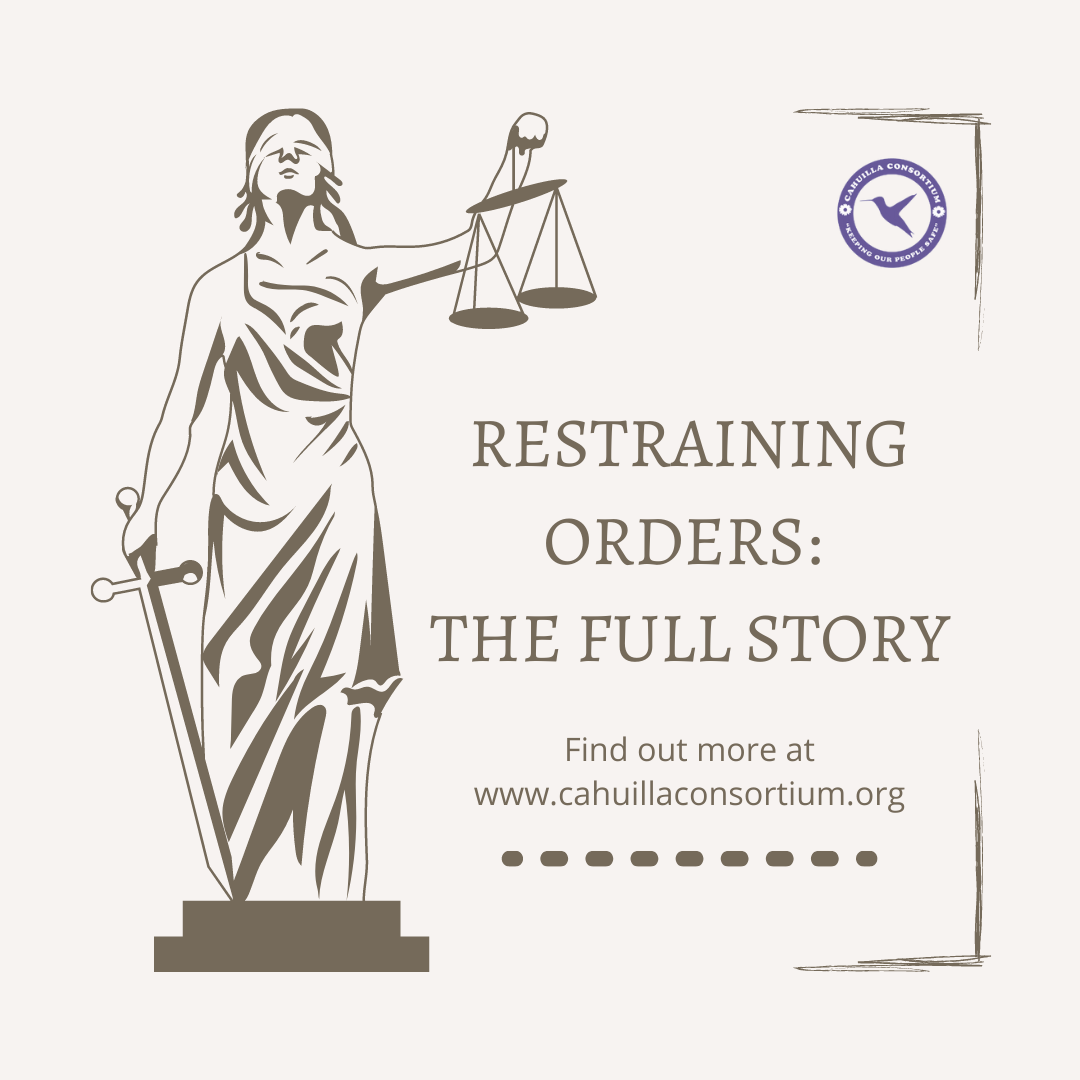Restraining Orders: The Full Story

If you have been harmed, harassed, or threatened you, you may qualify for one of three common types of protection orders. Though there are many types of restraining orders (depending on the state you live in), the CCVAP Advocates primarily utilize civil restraining orders, domestic violence restraining orders, and elder/dependent abuse restraining orders when assisting with our clients. Each type of restraining order can provide different types of protection for individual situations. Below, you will be able to learn more about each type:
Domestic Violence Restraining Order
- Establish custody of minor children
- Limit or eliminate contact between parties
- Restricts the restrained party’s ability to own a firearm
- Require the restrained party to move out of a shared home
- Outline economic responsibility between intimate partners
- If your relationship is one of the following, you may seek protection through a domestic violence restraining order:
- Have a child or children with the person you seek protection against.
- Are married to the person you seek protection against.
- Are engaged to be married to the person you seek protection against.
- Are registered domestic partners.
- Used to be registered domestic partners.
- Live with the person you seek protection against.
- You used to live with the person you seek protection against.
- Are dating the person you seek protection against.
- Used to date the person you seek protection against.
- Are related by blood, marriage, or adoption. (Please note this only covers people in your immediate family) If you are unsure of who is considered your immediate family, please call your local courthouse for clarification before filling.
Civil Restraining Order
- Limit or eliminate contact between parties
- Restricts the restrained party’s ability to own a firearm
- Require the restrained party to move out of a shared home
- If your relationship is one of the following, you may seek protection through a civil restraining order:
- Roommates
- Neighbors
- Co-workers
- Non-immediate family members
- People who are not close to you
Elder or Dependent Abuse Restraining Order
You may qualify for an Elder or dependent abuse restraining order if
- You are 65 or older, OR
- You are between 18 and 64 and have certain mental or physical disabilities that keep you from being able to do normal activities or protect yourself.
AND
You are a victim of:
- Physical or financial abuse,
- Neglect or abandonment,
- Treatment that has physically or mentally hurt you, or
- Deprivation (withholding) by a caregiver of basic things or services you need so you will not suffer physically, mentally, or emotionally.
If the person who is abusing you is a spouse or partner, or a child or grandchild, you may meet the requirements for the elder or dependent adult abuse restraining order and the domestic violence restraining order. Consult an attorney, domestic violence victim advocate, or an Adult Protective Services (APS) social worker before deciding which one to file.
Restraining orders, when granted, can provide many protections to someone who has been victimized for up to 5 years! Though you may have a lawyer to help you navigate the legality of a restraining order, a lawyer is not needed for one to be filed/granted. Many legal clinics do offer several types of restraining order assistance for survivors. If you do wish to find out additional information or wish to file a restraining order, reach out to your local courthouse for further information.
References:
https://www.riverside.courts.ca.gov/SelfHelp/DomesticViolence/domestic-violence.php
https://www.courts.ca.gov/selfhelp-elder.htm?rdeLocaleAttr=en